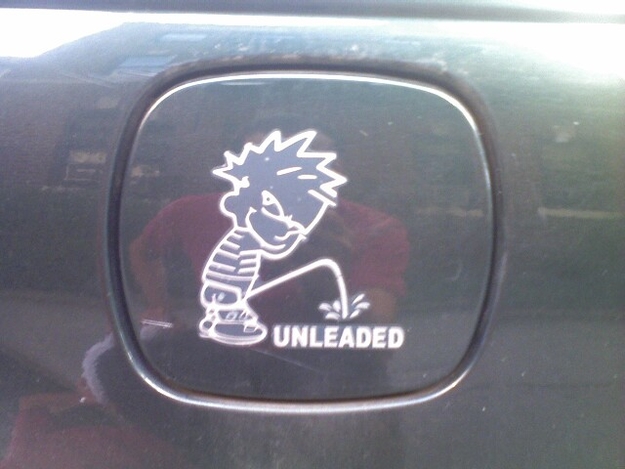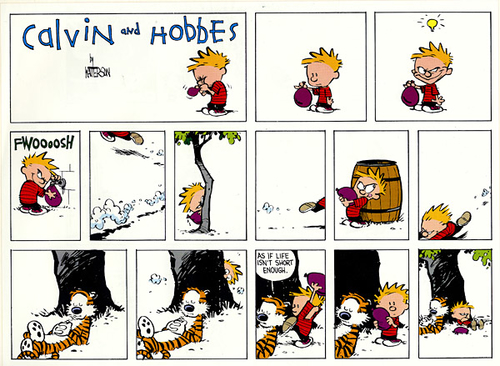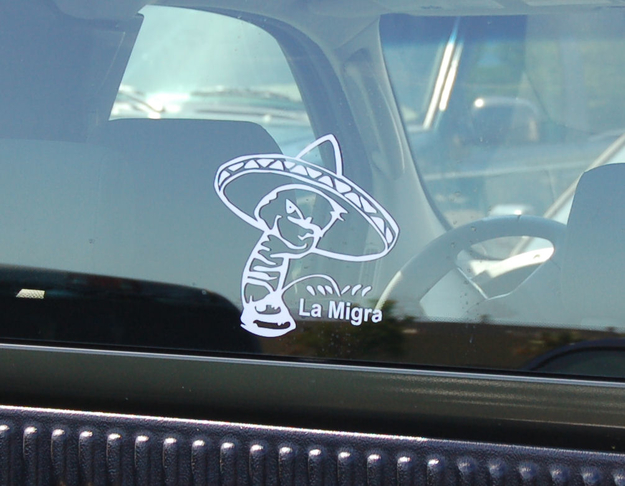I must admit it: I love comics and one that I find particularly fun and clever is Calvin and Hobbes created by Bill Watterson between 1985 and 1995. Calvin is a six-year-old boy, often mischievous and always adventurous, who spends all the time playing with his beloved stuffed tiger, Hobbes. Besides the childish connotations, the names do actually refer to John Calvin and Thomas Hobbes, respectively a 16th-century French Reformation theologian and a 17th-century English political philosopher. However, this is not the point of this article. Since the end of the publication of the daily comic strip, there is an image of Calvin which has gotten quite popular even though it has nothing to do with the main features of the character: I am talking about the peeing Calvin. Despite all his flights of fancy and pranks, Calvin has never been so naughty. And yet the decal has become a meme, being stuck on the back of numerous car windows and on the front of t-shirts and sweaters. Why is it worth talking about it? You get an answer at point 4, but take a minute to read 1, 2, and 3 to find out something more about the origin of the meme.
1. Did Watterson draw it?
If so, he never acknowledged the fact. Anyway, he probably didn't create the image. Indeed, the cartoonist was against the merchandising of his comics, which would have contaminated, as it were, the artistic and socially-engaged nature of the characters.
2. Where did the meme start?
It was probably born in Florida on the basis of a panel from the June 5th, 1988 strip showing Calvin filling up a water balloon to tease Hobbes.
Apparently, one of the first appearances of the meme depicted the pee flux falling on the letters FSU, the acronym for Florida State University. The latter has an ongoing rivalry in basketball with the UF, that is University of Florida. There is no certainty about its origin, though, since the drawing was produced secretly.
3. Are the decals illegal?
Yes, but the creators are difficult to prosecute. This was indeed a case of intellectual property leakage. The comic strip's distributor, United Press Syndicate, tried to track down the bootleggers and prosecute them. Nevertheless, Calvin decals' diffusion couldn't be controlled nor stopped, no-one could be really held responsible (the copyright violators were mainly fly-by-night operators) since Watterson never licensed his characters. Legal threats, fines, and even arrests didn't prevent more and more people to design or display the decals. The meme spread rapidly and involved many different entities, among them the Ford logo and president Obama. It also inspired similar drawings, representing other pee'ers, and paved the way to spin-offs, such as the praying Calvin.
4. What is the impact on national discourse, if any?
On our blog, we already mentioned the use of pee for protests. Calvin decals, featuring Calvin urinating on different logos, icons, symbols, and politicians, have also been transformed into a vehicle to express disapproval, anger and/or discontent. One of the first cases, beside the aforementioned sport rivalry, was constituted by the Ford-Chevy debate with Calvin taking a leak on the rival brand.
Arrested or fined decal-owners often made appeal to the First Amendment rights. Moreover, some people have claimed that the decals are an essential element for national dialogue because they keep it vital by drawing the attention (quite literally) to relevant issues and by favouring an exchange of opinions and preferences.
What are the strength-points of those images? They are concise, serve to quickly make a point and can reach a wide audience. Nonetheless, it is questionable how effective this can be and to what extent it is really fostering a healthy, truly democratic debate. It is true, the decals, be they on a truck, on a piece of clothing or on a newspaper page, are a shortcut to make a clear statement. Yet, they don't open up to a discussion: they only allow two types of answer: silence or peeing back. I am not sure whether a revenge cycle of pee'ers and counter-pee'ers can be really productive on the long term, especially if it degenerates into defecating, vomiting and expectorating figures. The risk is to gag free speech or to degrade it due to offensive images that bring parties apart rather than connect them. Once again: is urine a productive metaphor or is it a weak means within the realm of politics? Maybe it is better to use it for other purposes (which ones? Be inspired by our Pis' Talks! See here, for instance), but we give the benefit of the doubt.


